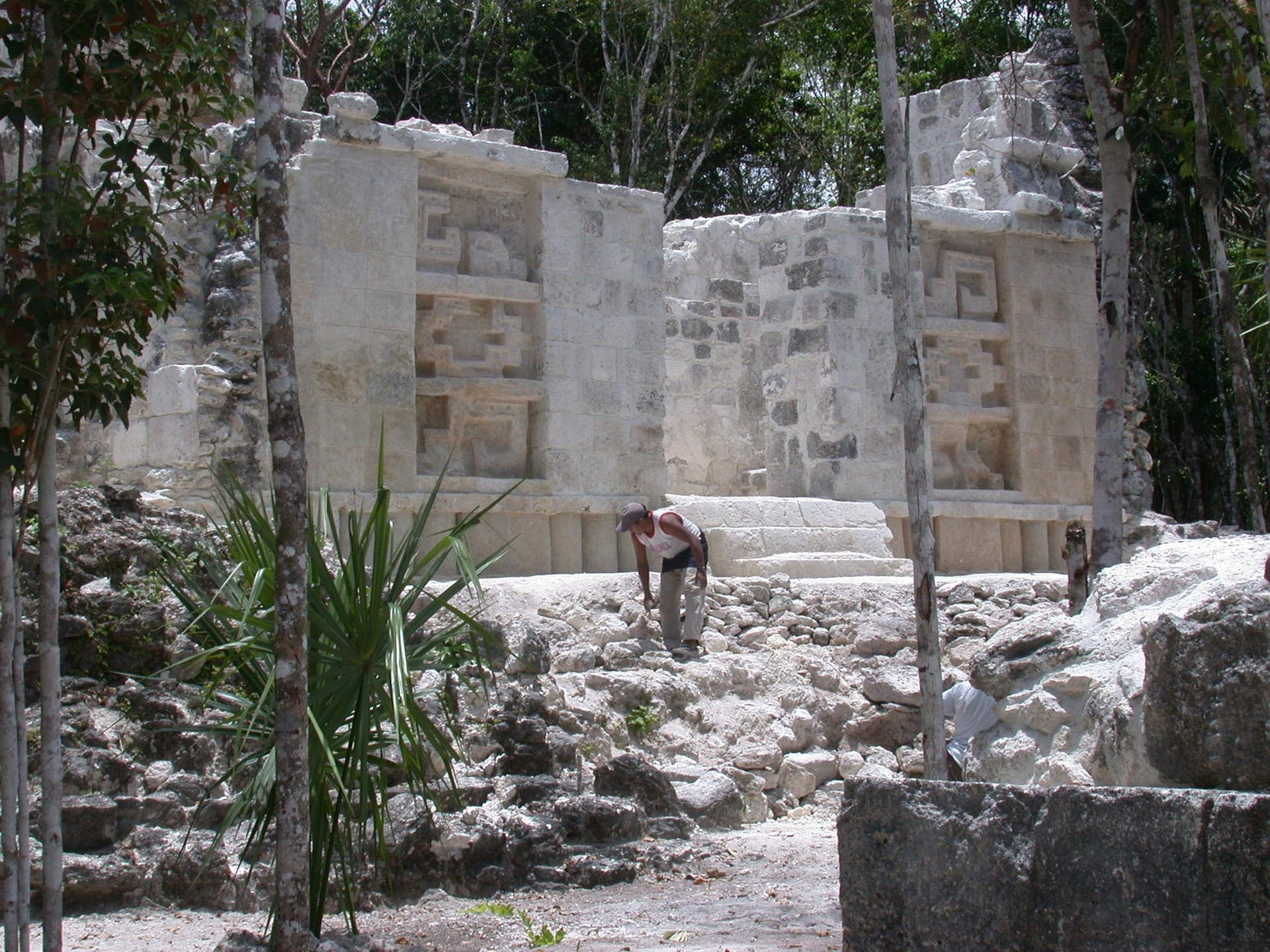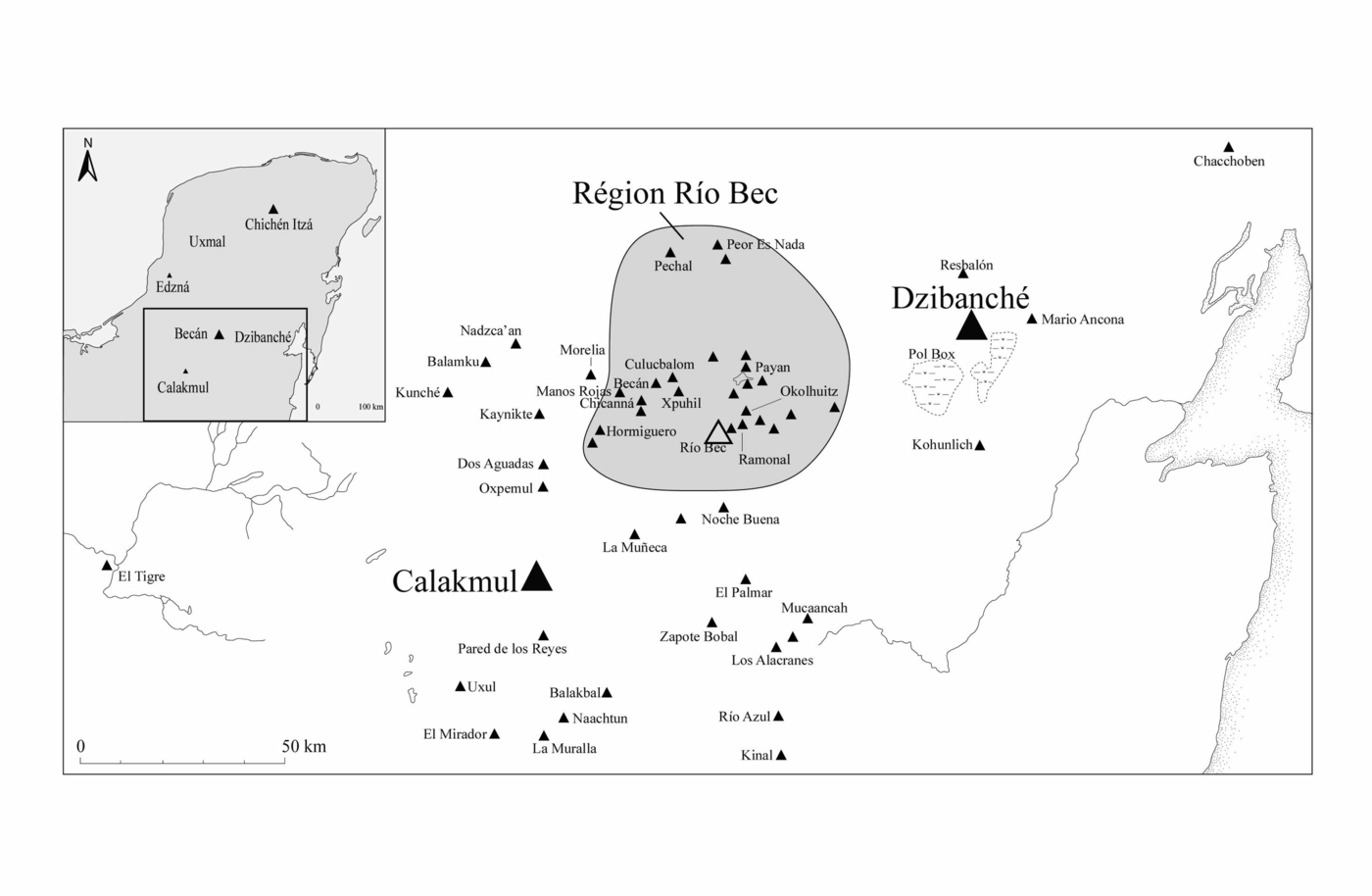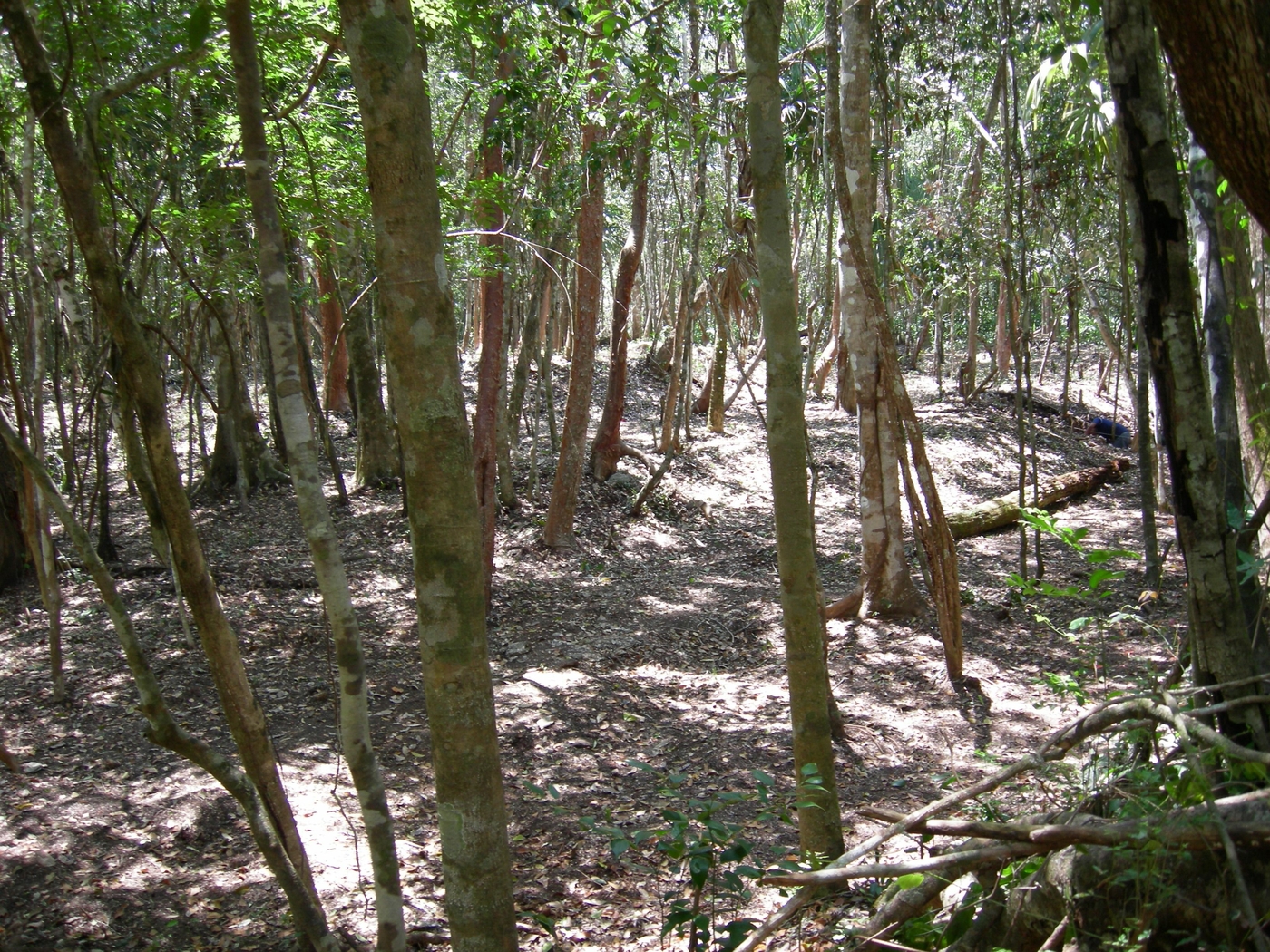Río Bec
In the Classic Maya (600-900 CE) lowlands, Río Bec is best known as an original style of architecture, described as early as the late 19th century and mainly associated with large, richly decorated masonry residences, which are among the most spectacular architecture produced by these societies at the height of their power. The investigations carried out on this eponymous site also reveal its unique farming and political practices.

The monumentality of the buildings in Río Bec and the exceptional state of their preservation in a tropical forest environment have drawn countless experts to this eponymous site strictly determined both in space and time. The question of the starting points for the originality and prosperity of Río Bec society was central to the first French project (2002–2010), which was followed by the current research programme.
Río Bec: a Mayan site like no other
Río Bec has been known since the 1970s for its vast system of agricultural terraces, which are still highly visible today. The region’s traditional architecture, the economy and its social and political organization guided the research carried out as part of Río Bec 1 (2002-2010), which shed light on various aspects of this society, which is both emblematic and enigmatic.
The eponymous Río Bec site is, in reality, an archaeological area composed of 73 monumental groups spread over approximately 32 km2, without an apparent political and religious centre – in other words, the king, court and population agglomeration that generally characterize classic lowland sites.
The opening of a research window over 1.6 km2 revealed that, between the monumental groups, which were mainly used for residential purposes, much more modest houses had been built, but all, big and small, were concentrated within a single plot, with boundaries, fields and agricultural developments.
This strongly agricultural character, in addition to the absence of a centre of power and hierarchy, argues in favour of the idea that this was a society of autonomous farmers who were remarkably prosperous without the need for a kingdom between 700 and 900.
The Río Bec 2 project (2019-2022): alternative forms of government and land use
The hypothesis of a change in power and successive forms of government in Río Bec society, associated with distinct agricultural systems, provided the starting point for the current research programme.
The Río Bec style developed from 700 and the rapid expansion of society in which this took place was so great that earlier occupations in this area seem to have been “erased" even though they date back to the end of the Preclassic period (300 BCE).
The goal of this programme is therefore to diachronically shed light on the political, social and economic development of Río Bec society. It applies to just three groups with some indicators of possible divine royalty (epigraphic, iconographic and architectural data) that may have been prematurely weakened and replaced by oligarchic structures whose power was expressed in monumental architecture and agricultural production. The research focuses on the dating and function of three groups (Kajtun, Group II and Group V) and the characterization of their local landscape, residential and agricultural, or on the social and agrarian components that ensured the maintenance, subsistence and prosperity of society.
Over the long term, the project should help us understand the crises of the 8th-9th centuries (“the Maya collapse") and the social and economic strategies deployed by the elites of the Classic period and the transition towards the postclassic political regime, which operated on the basis of power shared between chiefs from powerful lines.
Team and collaboration
The programme forms part of an interdisciplinary approach, combining archaeological methods centred on architecture and chronology and palaeoenvironmental approaches, particularly archaeobotanic and isotopic studies focused on landscapes and related resources.
The team is composed of researchers from various institutions in France, Mexico, Guatemala and Canada, almost all members of the first project, and benefits from the institutional and/or financial support of the French Ministry for Europe and Foreign Affairs, theUMR 8096 – Archéologie des Amériques (CNRS, Nanterre), du Centre français d’études mexicaines et centraméricaines, Mexico (CEMCA), the Fondation Stresser-Péan, the Université de Paris 1-Panthéon-Sorbonne, the Franco-Mexican company CIMESA and theINAH (Instituto Nacional de Antropología e Historia) in Mexico and its regional centre in Campeche.
Useful links
- Introduction to the project in Spanish: cemca.org.mx/es/proyecto-rio-bec-2/




